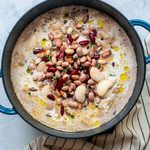Good Fats and Bad Fats: How to Tell the Difference
It’s time for some straight talk on fats: here’s what to eat and what to avoid when it comes to fat

We all need a little fat in our lives. It’s an important part of our diet, providing energy to help support growth and development and keeping our bodies both fuelled up and functioning well. It also provides essential building blocks for cells and helps with the absorption of vitamins A, D, E and K. Not only that but dietary fat can also greatly improve the flavour and texture of food. Fat tends to get a bad rap though, which is rather unfair and slightly flawed, all things considered. As it turns out, the type of fat found in foods is just as important to consider for overall good health as the amount of fat consumed.
Let’s break this down further. In essence, there are four main types of fats, each with their own unique and distinct characteristics. This can be further divided into two fats considered healthy and two bad fats known to be unhealthy.
First, the good fats… (AKA, unsaturated fats)
Monounsaturated fats. Shown to improve blood cholesterol levels and reduce the risk of heart disease, these healthy fats can be found in avocados, olive oil, canola oil and some nuts, including almonds, hazelnuts, cashews and pecans.
Polyunsaturated fats. Offering heart-healthy benefits, these essential fatty acids include two sub-categories: omega-3s and omega-6s. Our bodies need them, but since we can’t create them ourselves, they must be provided through diet, hence the ‘essential’ handle.
Omega-3 fats help to lower bad (LDL) cholesterol levels and reduce the risk of stroke. Foods that provide good sources of omega-3 fats include cold-water fish like salmon, trout and mackerel, as well as walnuts, flaxseed and omega-3 eggs (from hens fed an omega-3- enriched diet).
Omega-6 fats assist in lowering LDL cholesterol, too. However, consumed in larger quantities, they may also serve to lower good (HDL) cholesterol levels, so enjoy them in moderation. Foods containing omega-6 fats include safflower and sunflower oils, pecans and Brazil nuts.
…And now, the bad fats
Saturated fats. These fats can raise unhealthy LDL cholesterol and may increase the risk of developing heart disease. They are naturally occurring in foods from animals, such as full-fat dairy products, including cheese and butter, poultry (especially with the skin on) and fatty cuts of meat, and they can also be found in coconut and palm oils.
Trans fats. When liquid oil is chemically altered through a process called ‘partial hydrogenation,’ trans fats are the result. Not only do they raise unhealthy LDL cholesterol but they also lower healthy HDL cholesterol ‘ a risk factor for heart disease. Avoid these fats as much as possible or, at the very least, strive to scale them way back. Partially hydrogenated margarines, deep-fried and fast foods and processed foods are some of the main offenders.
Quick tips for making healthy fat choices
Eat less saturated fat. Cut back on red meats and skin-on poultry, and trim away visible fat from both before cooking. Grilling meats will help reduce saturated fat slightly, as fat drips off and away while cooking.
Eliminate trans fat. When grocery shopping, get in the habit of checking labels to ensure that you’re choosing foods that have little to no trans fats (and skip those that list ‘partially hydrogenated oil’ in the ingredients). Check nutritional information for menus online and those posted at fast food restaurants.
Focus on swapping bad fats for good. Include a small amount of unsaturated fat each day, especially foods rich in omega-3s. For example, make a salad with salmon, lentils and walnuts tossed with leafy greens and a vinaigrette made with flaxseed oil and lemon juice or cider vinegar.
Read labels. It’s worth noting that processed ‘fat-free foods’ do not necessarily translate to healthier options. Plenty of packaged fat-free foods have simply and slyly replaced the fat with refined carbohydrates and sugar.
How much fat is too much? That depends on your age, weight, lifestyle and overall health. Health Canada recommends between 20 and 35 percent of total daily calories from fats, or 65 grams, based on a 2,000-calorie diet.
For improved cardiovascular health, make this simple switch: Reach for the good (monounsaturated and polyunsaturated fats), limit the bad (saturated fats) and avoid the ugly (trans fats).




